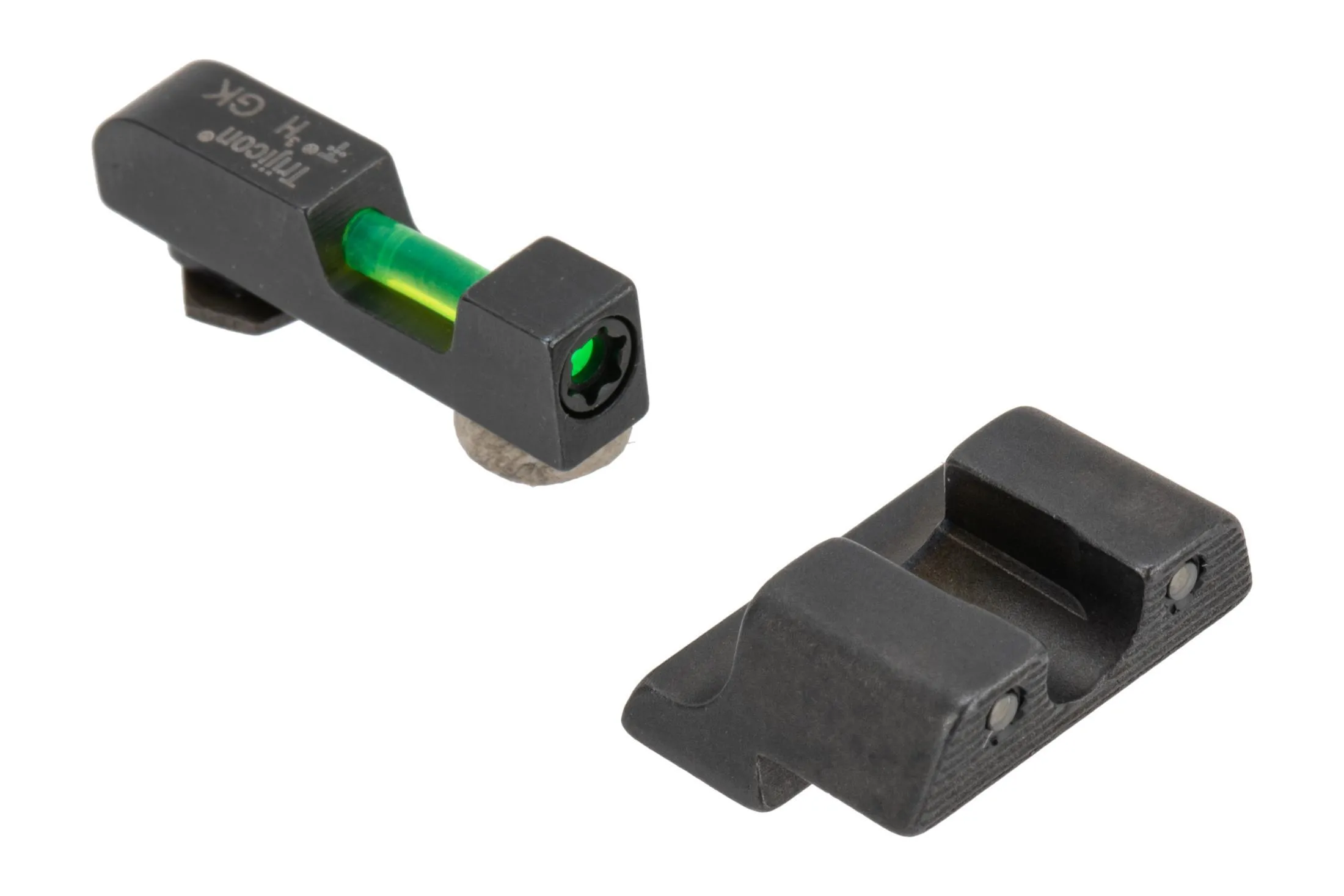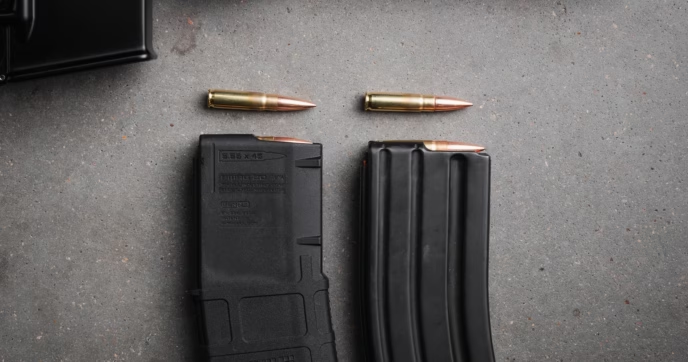
5 THINGS TO DO AFTER YOUR FIRST HANDGUN PURCHASE
Purchasing your first handgun is an exciting milestone to say the least. Although exciting, it can also leave first-time gun owners thinking, “What now?” – and rightfully so, as there is much to learn. Owning a firearm is a constitutional right, but one that comes with an inherent responsibility. There is a difference between a gun owner and a responsible gun owner. Gun owners merely own a firearm – responsible gun owners seek training and education to build their skill level and understanding.
So, if you feel lost as to what comes next and find yourself asking questions, you need to know that is a very good thing. You recognize the need to educate yourself and are gaining the information to do so. This is the very heart of responsible gun ownership.
There is much to learn when it comes to owning a firearm. Prior to taking the next steps in figuring out what to do, you must first establish why you have your firearm. Is this a firearm you are going to keep at home solely for home defense purposes? Or is this a firearm you plan to carry with you for self-defense? Establishing why you bought your firearm will help determine the next steps you should take.
We want to give you a generalized list of five things to think about. This is a great starting point to help steer your thinking in the proper direction. Having a plan that you can stick to will help build your skill level and confidence as well.

GUN SAFETY AND TRAINING:
Firearms do not come with knowledge or skill. They are simply a tool controlled by the end user. If you have taken a concealed carry class to obtain your license to carry, this is a good start, but there is so much more to learn.
Most concealed carry courses only touch on certain required aspects but do not cover needed and important information in depth. It is imperative to learn and fully understand all aspects of gun safety if you own a firearm. In addition to gun safety, actual live fire training is also important. The performance of our firearm is dependent upon our training and in a threat situation we will most likely fall to our lowest level of training instead of rising to the occasion.
Training is invaluable, as it builds our skill level and our confidence. The training you choose should be applicable to your life and why you own a firearm. The goal is to become proficient with the firearm you own.
Other training that is highly beneficial are classes that teach beyond firing your gun. Threat recognition – learning when and when not to use your gun, and classes on the firearm laws where you reside teach the importance of knowing what happens before and after an incident if you ever have to use your firearm.
Firearm safety and training is something you can begin at any time, even prior to your first firearm purchase.
Even if you can’t afford formal training, you should at least memorize these four rules:
1. Always treat all guns as if they are loaded, even if you know they are not.
2. Never point the gun at anything you are not willing to destroy.
3. Keep your finger off the trigger until you are ready to shoot.
4. Be aware of your target and what is beyond it.

STORAGE OPTIONS
Once you have your firearm, it is important to decide how you will store it.
If your firearm is for self or home defense, you want it to be ready to go and quickly accessible when you need it. Storing the gun, magazine and ammunition all in separate places is not going to work if you only have seconds to defend yourself. On the other hand, keeping it loaded and in the open could cause an accident and turn your firearm into a possible liability.
Luckily, there are some great products that have hit the market addressing both issues. A great example are the Hornady RAPiD Safes. These safes come in different sizes and are designed for your home or vehicle. Each safe features fast and dependable touch-free entry that is RFID activated by a watchband, key fob or decal that opens the spring-assist lid. The user can program up to five RFID tags for each safe. They also have keypad access as a secondary form of entry where the user can program a four-to-six-digit security code. A circular barrel key is included as a third method of entry if needed. These safes are easy to install with pre-drilled mounting holes if you wish to secure it to a stationary object. This is a wonderful option to keep your gun ready, but also secure and for your hands only.


INITIAL CLEANING AND FUNCTION TEST:
Most firearms are coming direct to you from the factory. While quality control can protect you from many issues, you’re still responsible for checking function and maintaining the pistol’s reliability.
The first thing you will want to do is learn to properly disassemble your gun. This allows you to become familiar with your specific gun and also enables you to clean it and check for any issues. It may sound silly to clean a “brand new gun”, but it really isn’t.
Some manufacturers coat the gun with a thick lubricant or preservative to protect it from rusting during shipping. Cleaning the gun and applying a good gun lubricant is all that is needed to make certain your firearm is ready to go.
We also recommend test firing your new gun with the ammunition you have chosen to use. Doing so ensures that there are no issues and that your gun is capable of handling the defensive ammunition you have chosen.

GEAR
Gear is more important than most people might think. If a holster or belt is not good and it fails you, drawing your gun could end up being problematic. It is important to find a good quality holster and a belt that is rigid enough and designed for carrying a firearm.
There are two primary carry methods, open and concealed. Once you have decided on which method you are going to practice, you can choose which setup is best for you to start with. The beauty of this is that you do not have to stick with just one carry method. From concealed carry handbags to clothing designed with built-in holsters, there are products available that fit any need a gun owner may have.

Whichever product or method of carry you choose, it is important to dry-fire and practice your draw with each and every one. Additionally, it is imperative to only utilize holsters and other concealed carry products that have reliable and safe trigger guard protection.

PERSONALIZATION
Now we are getting to the fun part!
Once you are familiar and comfortable with your gun, you may want to personalize it to your own tastes and likes. Some people do this for function and others for aesthetics. You may find that you want to change the grips, trigger or sights – maybe even add an optic or a light. This can be a great way to improve a stock gun that may not have everything you need or want. It is also a really great way to fall in love with it.
If you want to make major changes to your pistol’s ergonomics and handling, you might consider an aftermarket frame or slide. Nowadays, many of the most popular handguns have a comprehensive aftermarket for frames and slides, making it easy to find the exact contours and features to improve your pistol’s look and feel. These upgrades can also add additional features, such as optic mounts or accessory rails to make it easier to upgrade other parts of your pistol.

Many pistol owners also choose to update or replace their pistol’s parts and controls. Things like magazine releases and slide locks usually be replaced with just a few tools and a steady hand. Sights are among the most common items to replace, as fiber optic or night sights add new potential to the pistol with little downside. Just keep in mind that you may need a gunsmith’s help to install them, as many pistols require special tools to remove, replace, or adjust the iron sights.

If you want an even bigger improvement in performance, you could also upgrade to an aftermarket, match-grade barrel or a trigger system. While these enhancements are not a substitute for practice or skill, they will make your pistol more consistent, which makes it easier to find ways to improve yourself.

Accessories are also an important part of customization—both in form and function. For a self-defense pistol, most experts recommend that you have a high-output weapon light at the ready. You never know when you’ll need to shoot in low-light or obscured lighting conditions, and a quality weapon light can make all the difference.

Likewise, many experts are starting to recommend optics for pistols. Mini reflex sights, such as our co-branded Holosun HS507C-X2 ACSS®, can make meaningful improvements in a user’s accuracy and speed, especially in high-stress applications like personal defense. If you have an optics-compatible slide, the addition of a mini reflex optic can help give you an edge when you need it most.

Holosun HS507C-X2 Pistol Red Dot Sight – ACSS®
The more you enjoy your gun, the more you will want to shoot it. The more you shoot and train, the better your skills will become. Customization can be a lot of fun, but be careful not to go overboard. Anything you change with a firearm could possibly come into question if you ever have to use it in self-defense. You want to make sure the changes you make are ones that are legal and justifiable.

CONCLUSION
Purchasing your first firearm can be overwhelming on so many levels. The important thing to remember is that there are many resources available when it comes to firearm training and education. Following the above five steps will help start you on the path to becoming a safe, trained and responsible gun owner.



